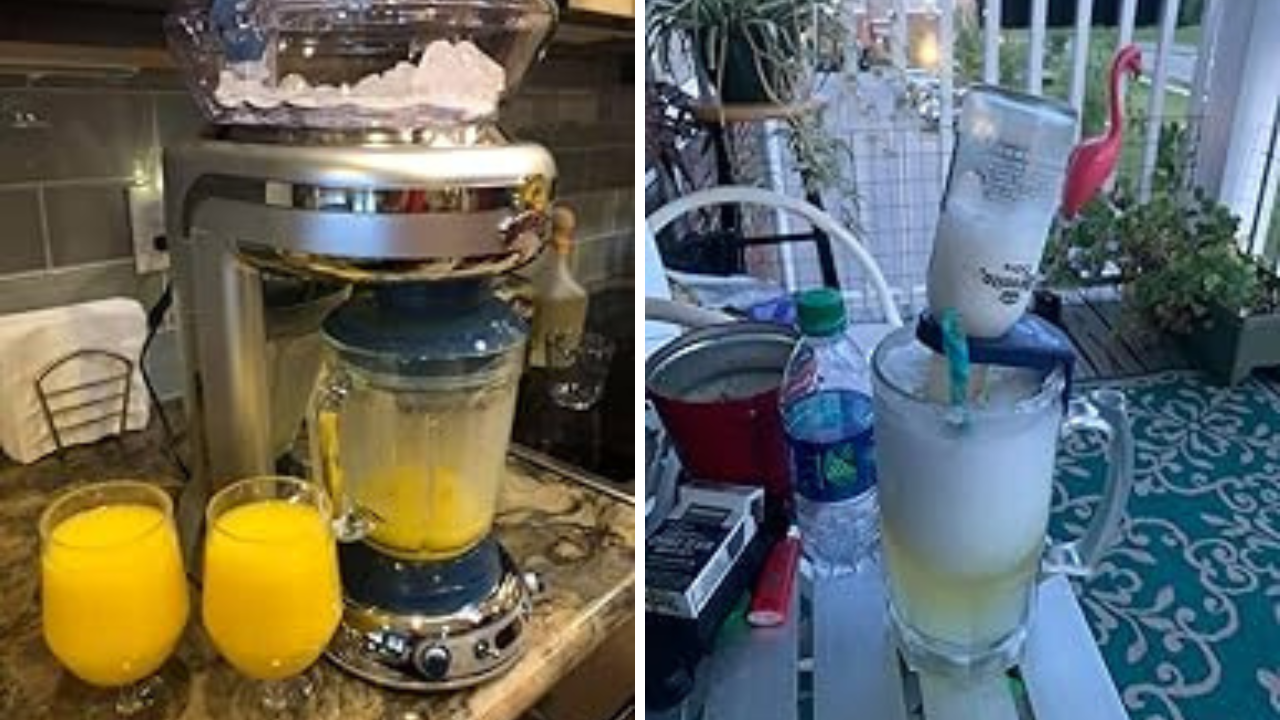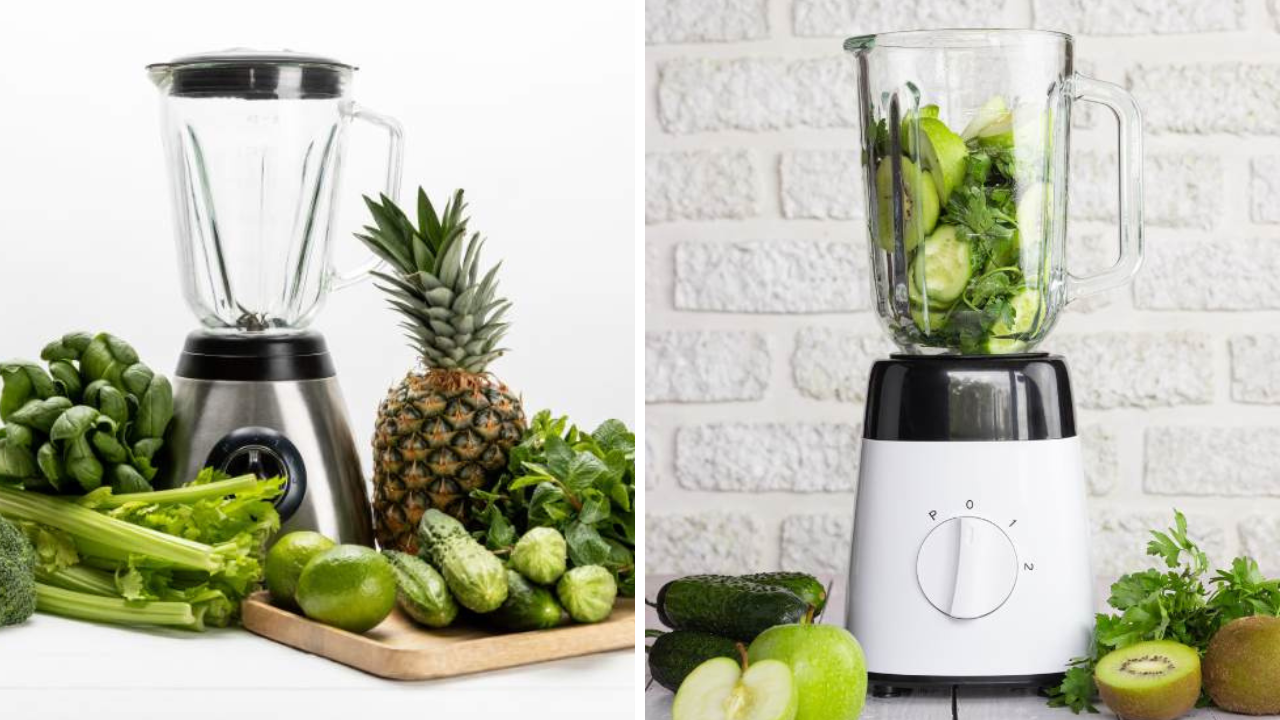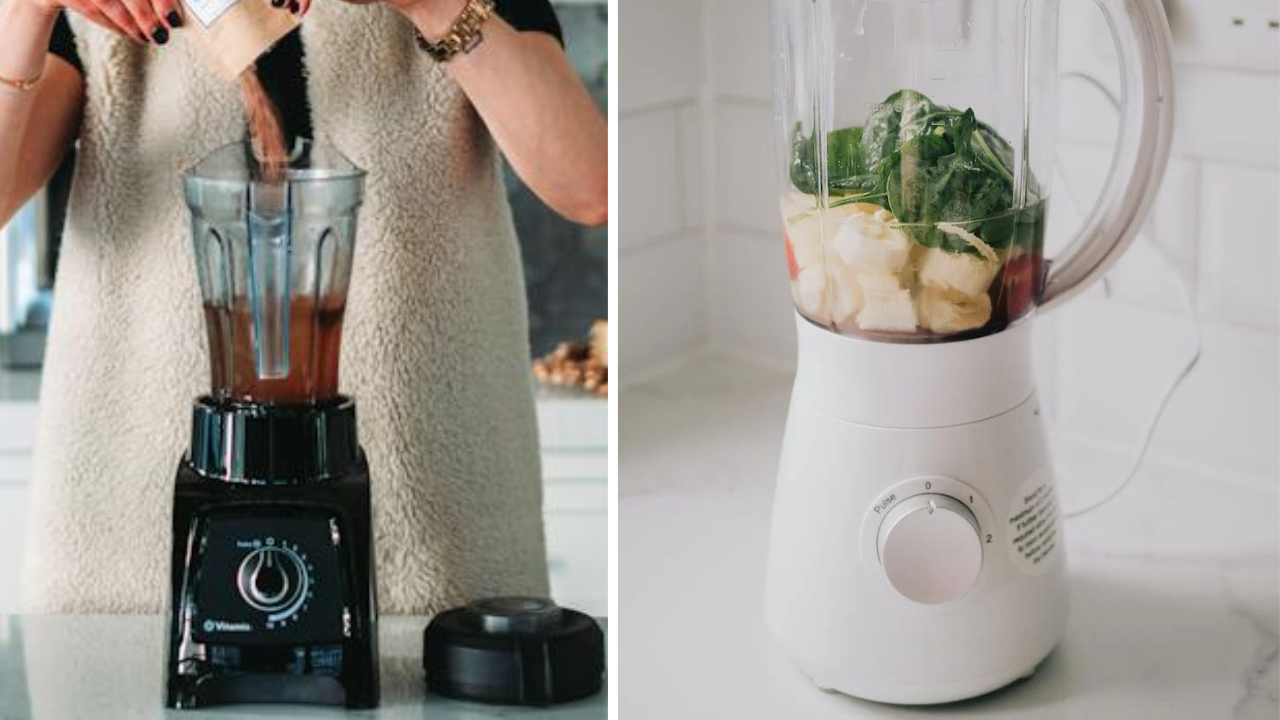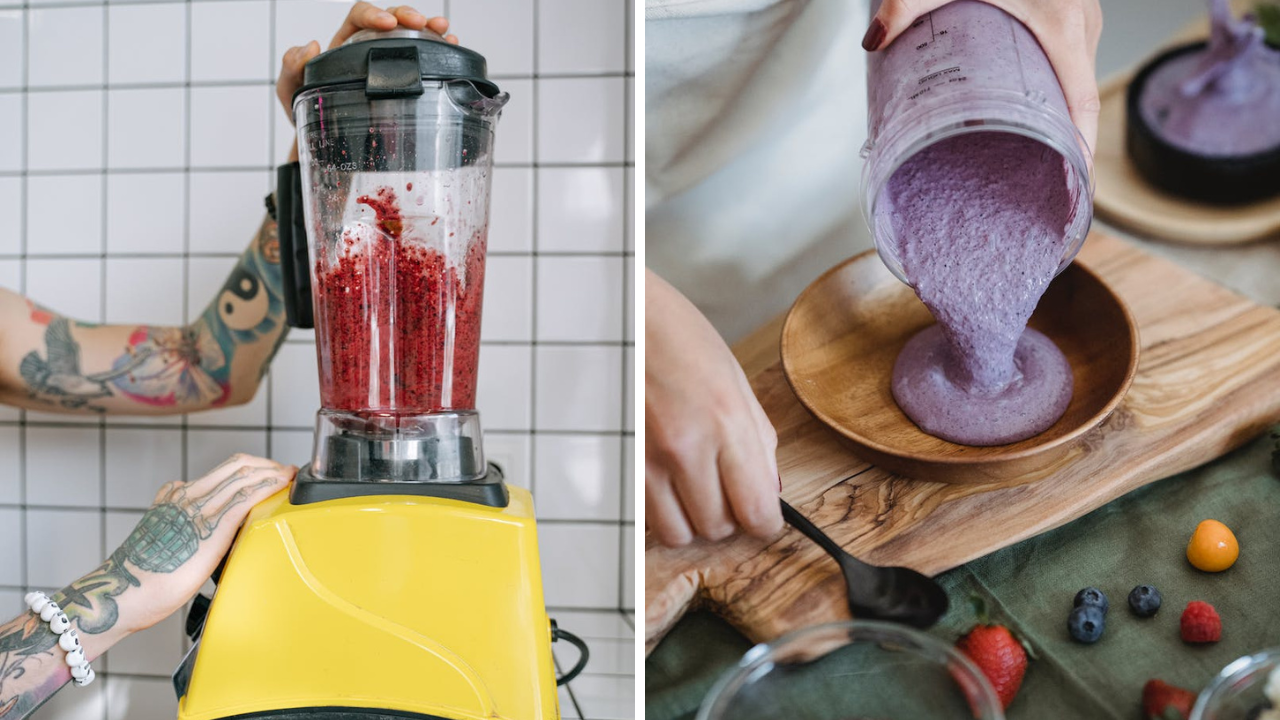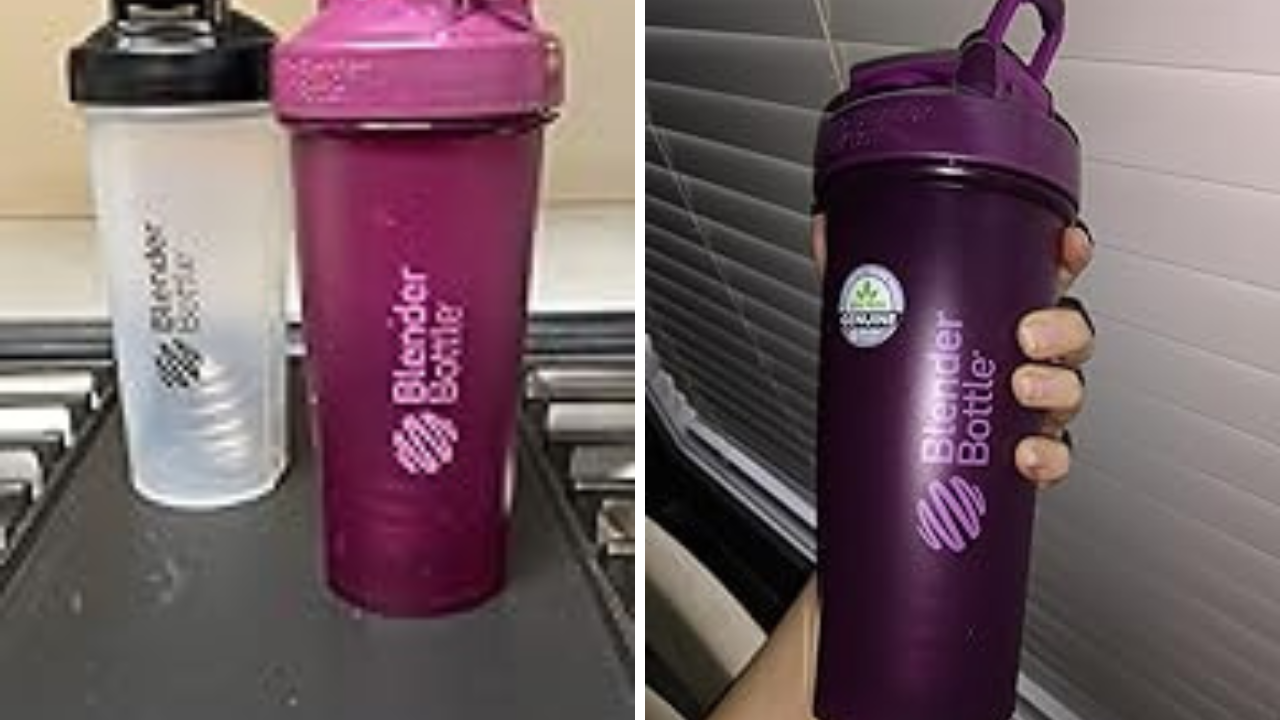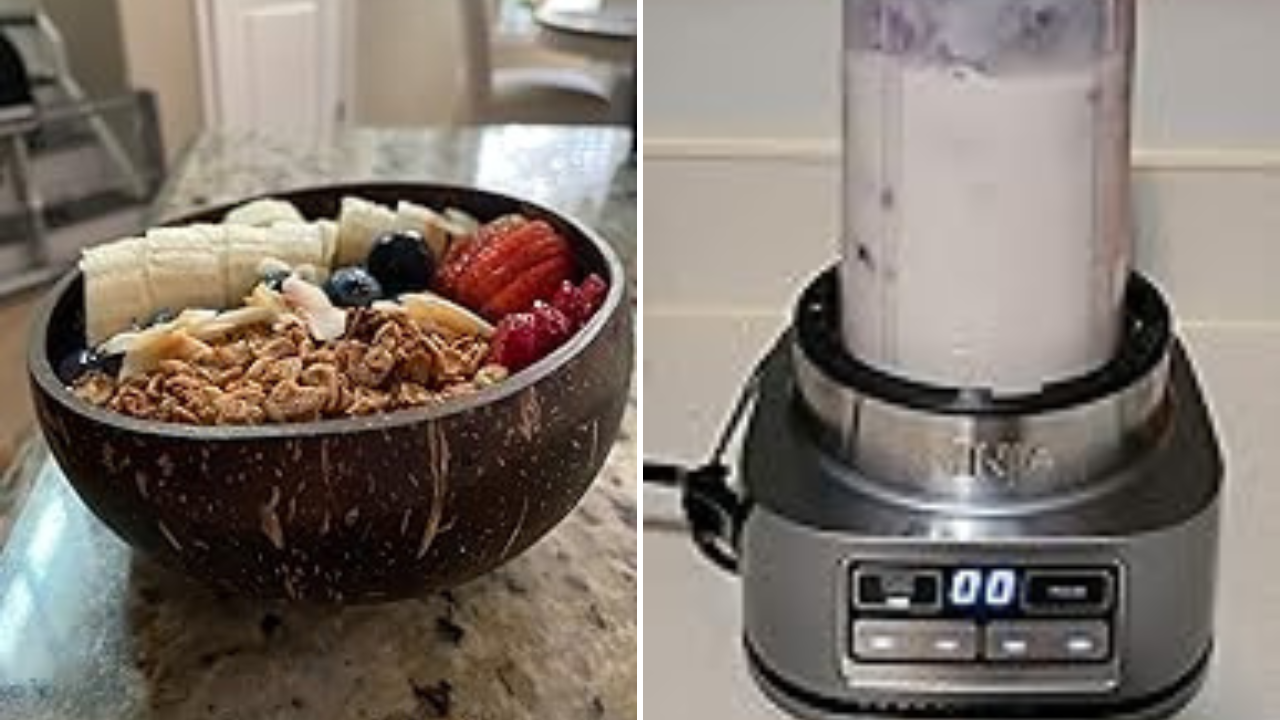When it comes to healthy eating, many people turn to blending and juicing as a way to incorporate more fruits and vegetables into their diet.
Both blenders and juicers have their own unique benefits, but which one is right for you?
In this article, we'll take a closer look at the differences between blenders and juicers and help you decide which one is the best fit for your lifestyle.
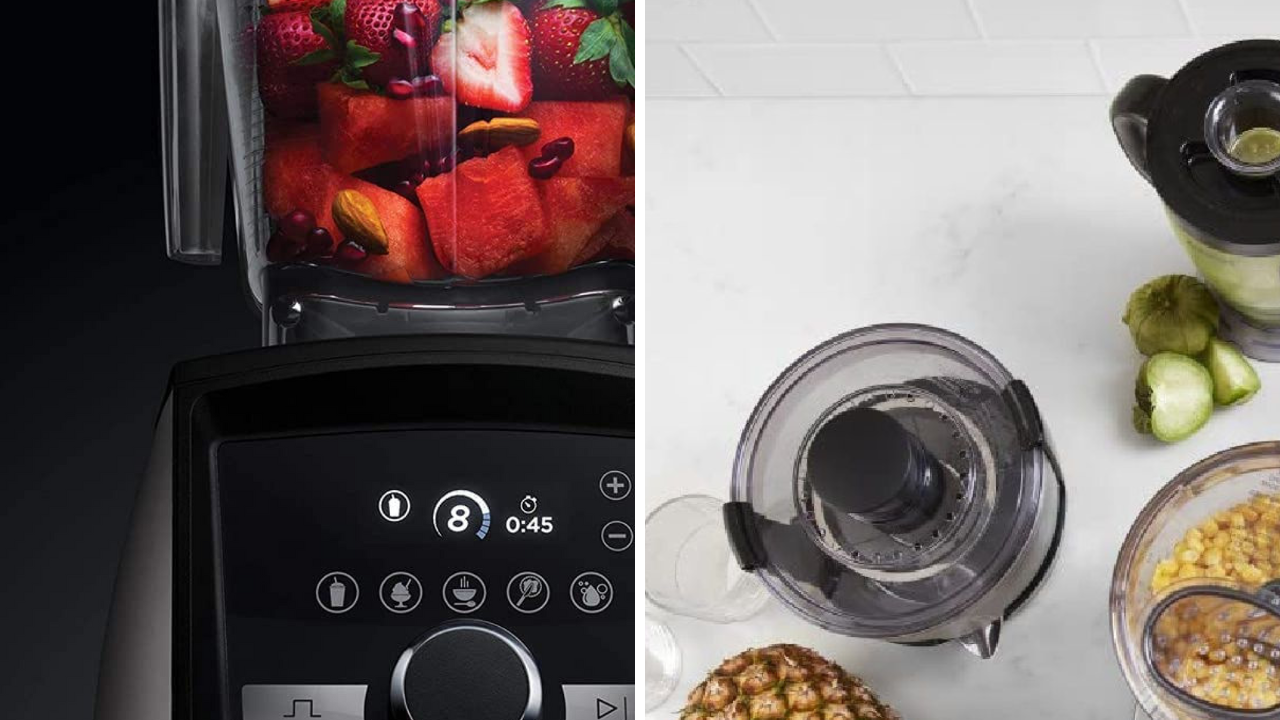
Understanding Blenders
Blenders are versatile kitchen appliances that can be used for a variety of tasks such as blending, pureeing, and mixing.
They are designed with a motor that powers a set of blades that rotate at high speeds to chop and blend ingredients. Blenders come in different sizes and shapes, and they can be used for different purposes.
Blenders are commonly used for making smoothies, soups, and sauces. They are also used for crushing ice and making frozen drinks.
Some blenders come with additional attachments such as food processors and choppers, which can be used for slicing and dicing vegetables and fruits.
Blenders can be categorized into two types: immersion blenders and countertop blenders.
Immersion blenders are handheld devices that can be used to blend ingredients directly in a pot or a bowl.
Countertop blenders are larger and more powerful, and they are designed to be used on a countertop.
When choosing a blender, it is important to consider the size, power, and features. A high-powered blender is ideal for blending tough ingredients such as nuts and ice. A blender with multiple speed settings can be used for different tasks such as pureeing and chopping.
Blenders come with different types of blades such as serrated, straight, and angled. Serrated blades are ideal for blending tough ingredients, while straight blades are ideal for pureeing and chopping.
Angled blades are designed to create a vortex that pulls ingredients down towards the blades for efficient blending.
Overall, blenders are versatile kitchen appliances that can be used for a variety of tasks.
When choosing a blender, it is important to consider the size, power, and features to ensure that it meets your needs.
Understanding Juicers
Juicers are kitchen appliances used to extract juice from fruits and vegetables. They are designed to separate the juice from the pulp, skins, and seeds of the produce.
There are several types of juicers available on the market, each with its own unique features and benefits.
Centrifugal Juicers
Centrifugal juicers are the most common type of juicer. They work by using a spinning blade to shred the produce and then separate the juice from the pulp.
These juicers are fast and efficient, but they can be noisy and may not extract as much juice as other types of juicers.
They are best suited for juicing hard fruits and vegetables like apples and carrots.
Masticating Juicers
Masticating juicers, also known as slow juicers, use a slow and gentle process to extract juice from produce.
They work by crushing and grinding the produce before separating the juice from the pulp.
These juicers are quieter than centrifugal juicers and can extract more juice from leafy greens and other soft produce. They are also capable of making nut butters and sorbets.
Citrus Juicers
Citrus juicers are designed specifically for juicing citrus fruits like oranges, lemons, and grapefruits.
They work by pressing the fruit against a reamer or cone to extract the juice. These juicers are simple to use and easy to clean, but they are limited to juicing citrus fruits only.
Twin Gear Juicers
Twin gear juicers use two interlocking gears to crush and grind the produce before separating the juice from the pulp.
These juicers are the most expensive and time-consuming type of juicer, but they are also the most efficient and can extract the most juice from produce.
They are best suited for juicing wheatgrass and other fibrous produce.
Overall, juicers are a great way to incorporate more fruits and vegetables into your diet. The type of juicer you choose will depend on your individual needs and preferences.
Comparing Functionality
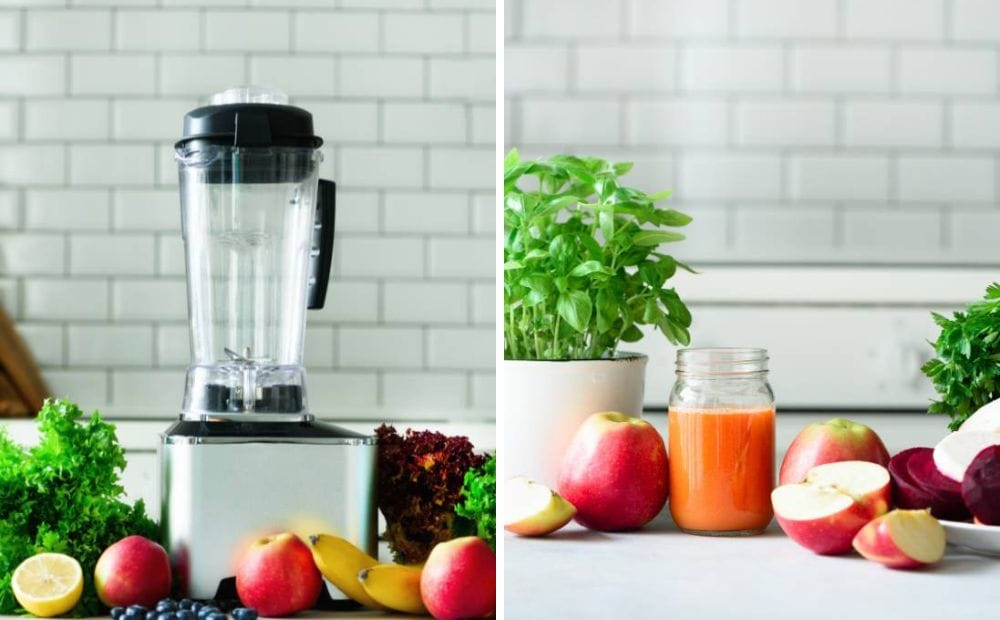
Blender for smoothies
Blender and Juicer are both appliances that are used for making healthy drinks.
However, they have different functionalities that make them unique. In this section, we will compare the blending and juicing capabilities of Blender and Juicer.
Blending Capabilities
Blenders are versatile appliances that can be used for various purposes. They can blend fruits, vegetables, ice, and nuts to make smoothies, purees, and sauces.
They are also great for making soups and dips. Blenders have powerful motors that can crush ice and blend tough ingredients in seconds.
They come with different blending settings that allow users to adjust the speed and power of the blades.
Blenders are also easy to clean. Most blenders have removable blades and jars that can be washed in a dishwasher or by hand. They are also compact and can be stored in a small space.
Juicing Capabilities
Juicers are specialized appliances that are designed to extract juice from fruits and vegetables.
They come in two types: centrifugal and masticating. Centrifugal juicers use high-speed blades to extract juice from produce, while masticating juicers use slow-speed gears to crush and extract juice.
Juicers are great for making fresh and healthy juice that is packed with nutrients. They are also easy to use.
Most juicers have a wide feed chute that can accommodate whole fruits and vegetables. They also have different settings that allow users to adjust the pulp level and the speed of the juicing process.
However, juicers have some downsides. They produce a lot of pulp, which can be messy and difficult to clean. They are also bulky and take up a lot of space in the kitchen.
Both Blender and Juicer have their unique functionalities.
Blenders are great for making smoothies, purees, and sauces, while Juicers are great for making fresh and healthy juice.
It all depends on the user's preference and needs.
Health Benefits
Blending and juicing are both popular methods of consuming fruits and vegetables that offers a variety of health benefits.
Here are some of the benefits of blending and juicing.
Benefits of Blending
Blending is a process of blending whole fruits and vegetables, including the skin and fiber, into a smoothie. Here are some of the benefits of blending:
- Blending retains the fiber content of fruits and vegetables, which aids in digestion and helps regulate blood sugar levels.
- Blending also helps in retaining the nutrients of the fruits and vegetables, which can be lost during the juicing process.
- Smoothies are a great way to consume a variety of fruits and vegetables in one serving, making it easier to meet daily nutritional requirements.
Benefits of Juicing
Juicing is a process of extracting the liquid from fruits and vegetables, leaving behind the fiber.
Here are some of the benefits of juicing:
- Juicing allows for the consumption of a larger quantity of fruits and vegetables in one serving, making it easier to meet daily nutritional requirements.
- Juicing can also help in the absorption of nutrients, as the liquid form is easier to digest and absorb.
- Juicing can also help in detoxification, as it allows the body to absorb the nutrients while eliminating the fiber.
Both blending and juicing have their own unique health benefits. It's important to choose the method that works best for your individual needs and preferences.
Ease of Use
Blenders and juicers are both designed to make life easier in the kitchen.
However, when it comes to ease of use, there are some differences between the two appliances.
Using a Blender
Blenders are incredibly versatile and easy to use. They can blend, chop, puree, and liquify a wide variety of ingredients, making them perfect for making smoothies, soups, dips, and more.
Most blenders come with multiple speed settings and can be used for a variety of different tasks.
Using a blender is as simple as adding your ingredients to the container, selecting the appropriate speed setting, and pressing the start button.
Many blenders also come with pre-programmed settings for specific tasks, such as making smoothies or crushing ice.
One potential downside of using a blender is that it can be difficult to get a smooth consistency when blending certain types of ingredients, such as leafy greens or fibrous fruits and vegetables. In these cases, a juicer may be a better option.
Using a Juicer
Juicers are designed specifically for extracting juice from fruits and vegetables. They come in two main types: centrifugal juicers and masticating juicers.
Centrifugal juicers are faster and more affordable, while masticating juicers are slower and more expensive but produce higher quality juice.
Using a juicer is a bit more complicated than using a blender. You need to first prepare your ingredients by cutting them into small pieces and removing any seeds or pits.
You then feed the ingredients into the juicer, which separates the juice from the pulp.
One of the biggest advantages of using a juicer is that it produces a smoother, more consistent juice than a blender.
However, it can be more time-consuming and messy to use, and the pulp that is left over can be difficult to dispose of.
Overall, both blenders and juicers have their own unique advantages and disadvantages when it comes to ease of use.
The choice between the two will depend on your specific needs and preferences in the kitchen.
Maintenance and Cleaning
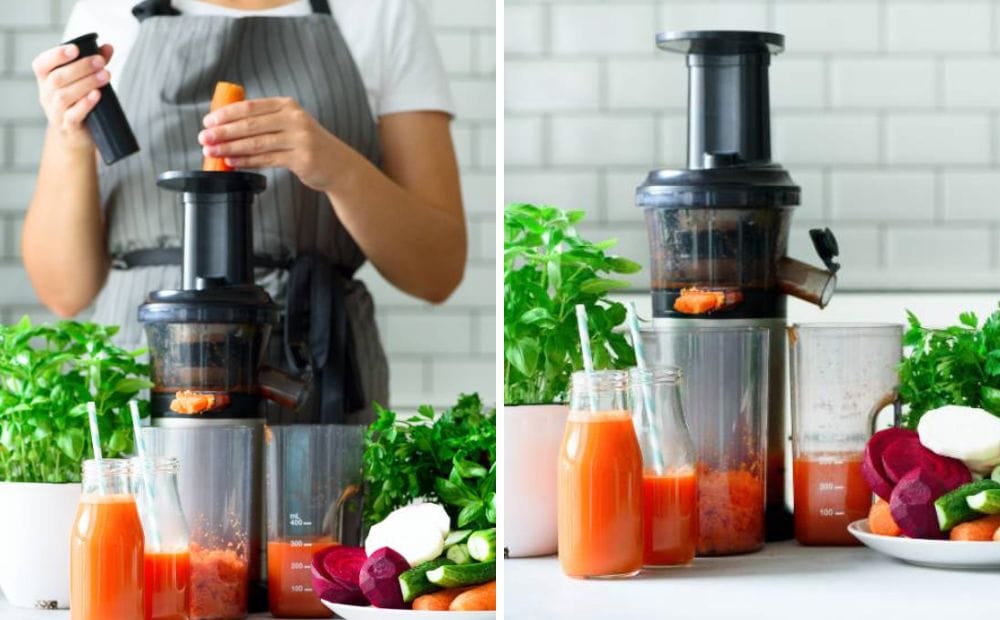
Juicer for juice
Blenders and juicers require different levels of maintenance and cleaning. Here's what you need to know:
Cleaning a Blender
Blenders are relatively easy to clean. Most models have detachable blades and containers that can be washed in a dishwasher or by hand with soap and water.
Here are some tips for cleaning a blender:
- After use, rinse the container with water to remove any leftover food particles.
- For tough stains, add a few drops of dish soap and fill the container halfway with warm water. Run the blender for a few seconds, then rinse with water.
- If the blades are detachable, remove them and wash them separately with soap and water.
- Always dry the container and blades thoroughly before storing.
Cleaning a Juicer
Juicers require more maintenance and cleaning than blenders. They have more parts and are harder to clean.
Here are some tips for cleaning a juicer:
- After use, disassemble the juicer and rinse all parts with water to remove any leftover food particles.
- Use a soft brush to clean the mesh filter and other hard-to-reach parts.
- Soak all parts in warm water with dish soap for a few minutes to loosen any stuck-on food particles.
- Rinse all parts thoroughly with water and dry them with a towel or let them air dry.
- Some juicers have dishwasher-safe parts, so check the manufacturer's instructions.
Overall, blenders are easier to clean than juicers. However, with proper maintenance and cleaning, both appliances can last a long time.
Price Comparison
Cost of Blenders
Blenders are generally more affordable than juicers, with prices ranging from $20 to $600.
The cost of a blender depends on its features, such as motor power, speed settings, and additional attachments.
Here are some examples of popular blenders and their prices:
| Blender Model | Price |
|---|---|
| Vitamix 5200 | $449 |
| Ninja Professional Blender | $79 |
| KitchenAid K400 Blender | $199 |
| Oster Pro 1200 Blender | $79 |
| NutriBullet Pro | $89 |
Cost of Juicers
Juicers, on the other hand, are generally more expensive than blenders, with prices ranging from $50 to $1,500.
The cost of a juicer depends on its type, such as centrifugal, masticating, or hydraulic press, as well as its features and speed.
Here are some examples of popular juicers and their prices:
| Juicer Model | Price |
|---|---|
| Breville Juice Fountain Plus | $149 |
| Omega J8006HDS Nutrition Center Juicer | $299 |
| Hurom H-AA Slow Juicer | $439 |
| Kuvings Whole Slow Juicer Elite C7000 | $449 |
| Norwalk Model 290 Juicer | $2,495 |
In summary, blenders are generally more affordable than juicers, with prices ranging from $20 to $600.
Juicers, on the other hand, are generally more expensive than blenders, with prices ranging from $50 to $1,500.
Conclusion
Both Blender and Juicer have their strengths and weaknesses. Blender is a versatile software that can handle a wide range of tasks, from 3D modeling to video editing.
It has a large community of users, which means that there are many resources available for learning and troubleshooting. Blender is also free and open-source, which makes it accessible to anyone.
Juicer, on the other hand, is a specialized software that is designed specifically for juicing.
It has a user-friendly interface and is easy to use, even for beginners. Juicer also comes with a wide range of recipes and pre-set programs, which makes it easy to get started.
When it comes to price, Blender is the clear winner, as it is free and open-source. Juicer, on the other hand, can be quite expensive, depending on the model and features.
Overall, the choice between Blender and Juicer depends on the user's needs. If you are looking for a versatile software that can handle a wide range of tasks, Blender is the way to go.
If you are looking for a specialized software that is designed specifically for juicing, Juicer is a great choice.
Frequently Asked Questions
Can a juicer be used as a blender?
No, a juicer and a blender are two different appliances that serve different purposes. A juicer extracts juice from fruits and vegetables, while a blender blends them together into a smoothie or a puree.
Which is better for weight loss, a juicer or blender?
Both juicing and blending can be beneficial for weight loss as they provide a high amount of nutrients in a low-calorie form. However, juicing may be more effective for weight loss as it extracts the fiber from fruits and vegetables, making it easier for the body to absorb the nutrients.
What is the difference between a juicer and a smoothie maker?
A juicer extracts juice from fruits and vegetables, separating the fiber from the liquid. A smoothie maker, or a blender, blends all the ingredients together, including the fiber.
Is it better to use a cold press juicer or a blender?
It depends on what you are trying to achieve. A cold press juicer extracts more nutrients from fruits and vegetables and produces a higher yield of juice. A blender, on the other hand, retains the fiber and produces a thicker consistency.
Do I really need a juicer or can I just use a blender?
It depends on your personal preference and the type of drink you want to make. If you prefer a smoother consistency without the fiber, a juicer may be a better option. If you want to retain the fiber and make a thicker drink, a blender may be a better choice.
What is the best 2-in-1 juicer and blender machine?
There are several 2-in-1 juicer and blender machines available on the market. Some popular options include the NutriBullet, the Ninja Professional Blender with Nutri Ninja Cups, and the Breville Juice and Blend. It is important to research and compare different models to find the one that best fits your needs and budget.
If your blender has worn out or are in the market for a new one, and check out the blog post below for our top picks of different types of blenders:
